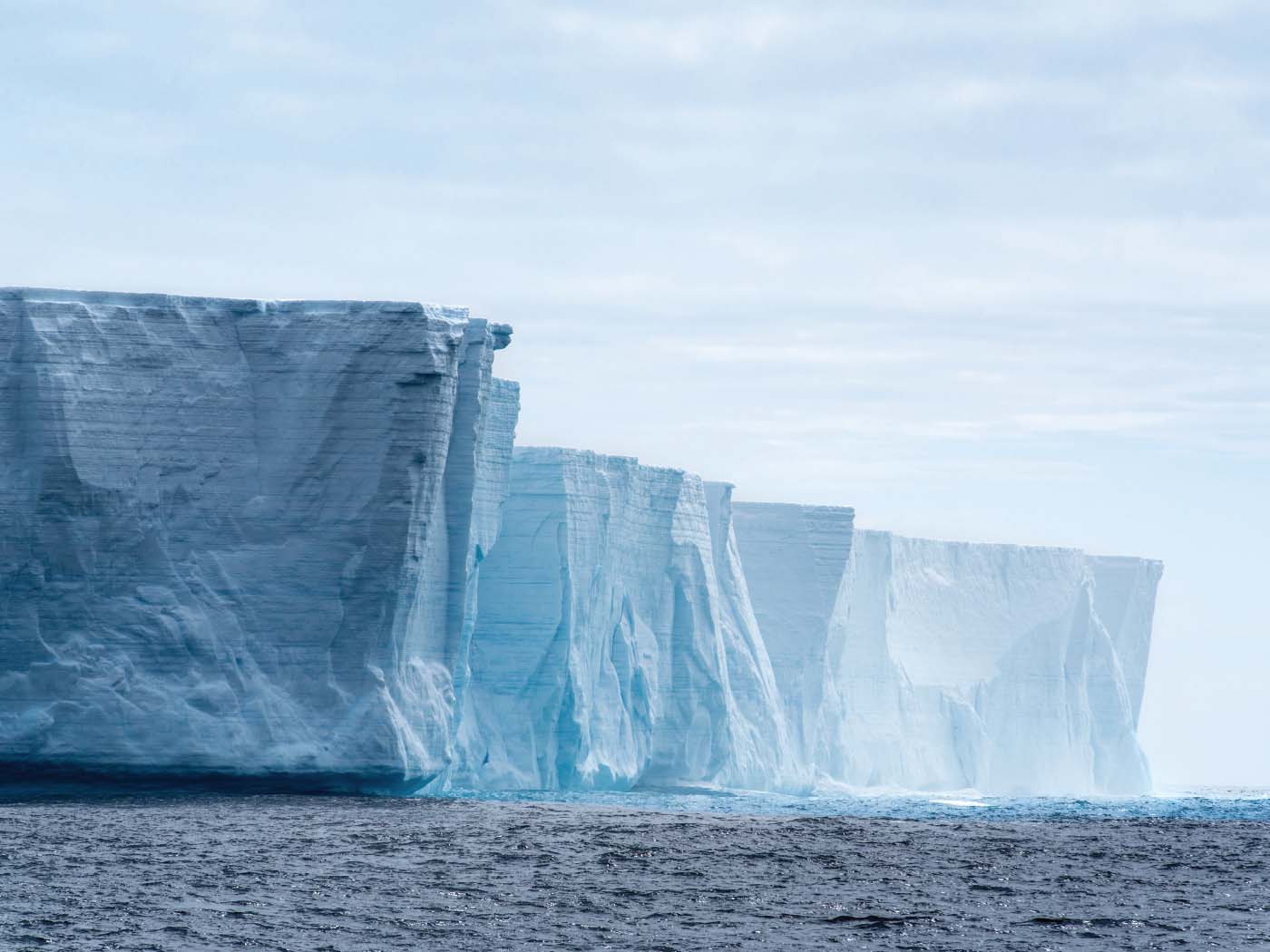The evolutionary history of the world from the 'big bang' to the present universe is a series of gradual steps from the simple to the complicated, from the unordered to the organized, from the formless gas of elementary particles to the morphic atoms and molecules and further to the still more structured liquids and solids, and finally to the sophisticated living organisms. There is an obvious tendency of nature from disorder to order and organization. Is this tendency in contradiction to the famous second law of thermodynamics, which says that disorder must increase in nature? The law says that entropy, the measure of disorder, must grow in any natural system.1
The "obvious tendency of nature from disorder to order and organization" is, of course, only an assumption of evolutionists. The real tendency in the natural world, as expressed by the Second Law of Thermodynamics, is from order and organization to disorder. This very obvious problem is commonly bypassed by evolutionists with the naive statement that the earth is a system open to the energy of the sun and that this fact resolves the problem! Creationists in turn have reminded them that while an open system and available energy constitute necessary conditions before a growth in order (or information) can take place, they are not sufficient conditions. In addition, there must be a pre-coded program containing the necessary information to direct the growth of the system and one or more conversion mechanisms to convert the external energy into the highly specific work of internal growth. Since the vast system of the hypothetically evolving biosphere as a space-time continuum seems to lack both a program and mechanism, it is clearly precluded by the Second Law.2
It has been especially difficult to imagine ways to get life started in the first place. How can unordered non-living chemical elements be combined naturalistically into the extremely sophisticated ordered information in a replicating system? The common belief that this problem has been practically solved by modern biochemists is premature, to say the least. Freeman Dyson says:
We are still at the very beginning of the quest for understanding of the origin of life. We do not yet have even a rough picture of the nature of the obstacles that prebiotic evolution has had to overcome. We do not have a well-defined set of criteria by which to judge whether any given theory of the origin of life is adequate.3
The nature of the problem in trying to account for the origin of a replicating system has been well expressed by Angrist and Hepler:
Life, the temporary reversal of a universal trend toward maximum disorder, was brought about by the production of information mechanisms. In order for such mechanisms to first arise it was necessary to have matter capable of forming itself into a self-reproducing structure that could extract energy from the environment for its first self-assembly. Directions for the reproduction of plans, for the extraction of energy and chemicals from the environment, for the growth of sequence and the mechanism for translating instructions into growth all had to be simultaneously present at that moment. This combination of events has seemed an incredibly unlikely happenstance and often divine intervention is prescribed as the only way it could have come about.4
Small wonder! In the real world, every effect must have an adequate cause, but the usual laws of science do not seem to intimidate evolutionists. In the strange land of evolutionary credulity, wonderful things may happen — plans draw themselves, mechanisms design themselves, order generates itself from chaos, and life creates itself! Yet evolutionists call creationists unscientific because they postulate an adequate Cause (divine intervention) to account for the marvelous Effect called life.
In creation/evolution debates, creationists commonly place great emphasis on the Second Law of Thermodynamics as an overwhelming evidence against evolution. Although there have been approximately a hundred such debates held within the past four years, with leading evolutionist professors on major college and university campuses, the latter have never yet been able to come up with an answer of any consequence to this problem. Even more amazingly, most of them do not even seem to understand the problem, either dismissing it as irrelevant or else making some vacuous reference to ice crystals or open systems!
There are apparently only a few evolutionists who realize the magnitude of the problem and have been trying to find a solution. Some of these attempts have been discussed in previous Impact articles.5,6
By far the most important of these efforts, however, has been the suggestion of a Belgian scientist named Ilya Prigogine. Dr. Prigogine is a widely-known chemist and thermodynamicist, with faculty appointments both at the University Libre de Bruxelles and at the University of Texas at Austin. An indication of the strategic significance of Prigogine's ideas, is that they have recently won for him the Nobel Prize in Chemistry. Judging from the popular announcements, the main reason for this award was the ray of hope Prigogine has given evolutionists in their battle with entropy!
According to Newsweek, for example, the significance of Prigogine's work is as follows:
Scientists who have sought to explain the origin of life as the result of chemical interactions have been confounded by the second law of thermodynamics: energy tends to dissipate and organized systems drift inevitably toward entropy, or chaos.... Prigogine's insights will give biologists new grounds for learning how the first random molecules organized themselves into life forms.... Prigogine thinks the Nobel committee recognized that his work is building a bridge between the physical and human sciences.7
According to an interview in a professional chemical journal, Prigogine himself was "really surprised" at the decision of the Nobel committee. He also said: "The fact that the Nobel committee has chosen this one subject is a great encouragement."8
If, indeed, Prigogine had shown that the tremendous amount of information necessary for molecular self-replication can be produced naturalistically despite the entropy law, his achievement would be well worth the Nobel Prize. It would be all the more remarkable in view of the fact that Prigogine himself has "not actually worked in a chemistry lab for decades."9 At best, however, he has only offered a theoretical speculation, not an experimental demonstration. It is hard to avoid the suspicion that the Nobel award in this case was due less to the scientific value of Prigogine's achievement than to the urgent need of the evolutionary establishment for some kind of answer, no matter how superficial, to the entropy problem.
Just how has Dr. Prigogine proposed to harmonize molecular evolution with the Second Law? Here it is, in his own words:
In all these phenomena, a new ordering mechanism…appears. For reasons to be explained later, we shall refer to this principle as order through fluctuations. The structures are created by the continuous flow of energy and matter from the outside world; their maintenance requires a critical distance from equilibrium, that is, a minimum level of dissipation. For all these reasons we have called them dissipative structures.10
These "dissipative structures" are supposed to exhibit a higher degree of structure, or order, than they possessed before being subjected to a large influx of outside energy, while at the same time their generation is accompanied by a large dissipation of energy in the form of heat. The main example cited by Prigogine is the formation of convection currents and vortices in a fluid subjected to a temperature gradient.
Under such conditions, vortices (or other fluctuations or instabilities) may be generated and maintained. These, supposedly, manifest higher "order" than the system possessed previously, even though such order has been produced at the cost of excessive over-all energy dissipation. This phenomenon has long been familiar to hydrodynamicists but Prigogine suggested that it may also apply in certain chemical and biological reactions which are proceeding under non-equilibrium conditions.
That such vortices or any other analogous "dissipative structures" could actually be called a device for naturalistic generation of higher order, and then that such a description could be awarded a Nobel Prize is almost unbelievable! This writer's own Ph.D. dissertation over a quarter of a century ago described in quantitative and analytical form the generation of turbulent vortices in fluid flow over rough surfaces.11 These, indeed, are dissipative structures, requiring the dissipation of much flow energy in the form of heat for their generation. Their own rotational energies in turn are soon dissipated by breaking up into smaller vortices, so that no permanent increase in order is produced, even if such vortices are assumed (very questionably) to possess a higher degree of order than the energy gradient which generated them. "Big whirls make little whirls that feed on their velocity; little whirls make tiny whirls, and so on to viscosity!"
In any case dissipative structures could hardly serve as a substrate for still higher order, since they themselves require an abnormally large input of energy just to maintain their own structures. Prigogine himself says that, as far as chemical or biological reactions are concerned, the generation of dissipative structures is apparently limited to "auto-catalytic" processes. But catalytic processes, like fluid vortices, do not generate higher order — they merely speed up reactions which themselves are already going downhill thermodynamically in the first place. And any imaginary "auto-catalytic" processes would certainly require already-living systems for their own generation, so they can hardly explain the generation of living systems!
Although Prigogine wistfully expresses the hope that his speculations may someday lead to an understanding of how life may have evolved from non-life, he is at least more cautious than those of his fellow evolutionists who are currently exhuberating over it. He warns:
It would be too simple to say that the concepts of life and dissipative structures are intermingled.... But it is not just one instability that makes it possible to cross the threshold between life and non-life; it is, rather, a succession of instabilities of which we are only now beginning to identify certain stages.12
In a later section, he again suggests caution:
But let us have no illusions. If today we look into the situation where the analogy with the life sciences is the most striking — even if we discovered within biological systems some operations distant from the state of equilibrium — our research would still leave us quite unable to grasp the extreme complexity of the simplest of organisms.13
One thing is clear. Whatever of scientific value may be deduced from Prigogine's analysis, he has not solved the problem of harmonizing entropy with evolution and he has certainly not shown that life can evolve from non-living chemicals. His dissipative structures do not constitute either the required program or the required mechanism to enable any kind of permanently increased order to be produced in an open system. However, he should perhaps be commended for trying. Maybe next he can work on a perpetual motion machine!
The problem of the origin of life can really only be resolved by recognition of the omnipotent Creator. The only alternative to belief in special creation is credulous faith in impotent Chance.
We are faced with the idea that genesis was a statistically unlikely event. We are also faced with the certainty that it occurred. Was there a temporary repeal of the second law that permitted a "fortuitous concourse of atoms"? If so, study of the Repealer and Genesis is a subject properly left to theologians. Or we may hold with the more traditional scientific attitude that the origin of life is beclouded merely because we don't know enough about the composition of the atmosphere and other conditions on the earth many eons ago.14
Yes, not knowing how life could be formed would indeed becloud the understanding of the origin of life! The problem is why this should be called the scientific attitude when all the scientific evidence continues to support special creation.
References
1 Victor F. Weisskopf, "The Frontiers and Limits of Science," American Scientist, Vol 65, July-August 1977, p. 409.
2 Henry M. Morris, The Scientific Case for Creation (San Diego: Creation-Life, 1977) pp.
3 Freeman Dyson, "Honoring Dirac," Science, Vol. 185, Sept. 27, 1974, p. 1161. Dyson is at Princeton's Institute for Advanced Study.
4 Stanley W. Angrist and Loren G. Hepler, Order and Chaos (New York: Basic Books, Inc., 1967), pp. 203-204.
5 Henry M. Morris, "Entropy and Open Systems" (ICR Impact Series No. 40) Acts and Facts, October 1976.
6 Jerry R. Bergman, "Albert Szent-Gyorgyi's Theory of Syntropy and Creationism" (ICR Impact Series No. 54), Acts and Facts, December, 1977.
7 "Chemistry: The Flow of Life" (Newsweek; October 24, 1977) October 17, 1977, p. 87.
8 Chemical and Engineering News; October 17, 1977, p. 4.
9 Newsweek , Ibid.
10 Ilya Prigogine, Gregoire Nicolis and Agnes Babloyants, "Thermodynamics of Evolution," Physics Today (Vol. 25, November 1972), p. 25.
11 Henry M. Morris, A New Concept of Flow in Rough Conduits (Minneapolis, University of Minnesota, 1951, 157 pp.)
12 Ilya Prigogine, "Can Thermodynamics Explain Biological Order" Impact of Science on Society, Vol. XXIII, No. 3, 1973, p. 169.
13 Ibid, p. 178.
14 Angrist and Hepler, op. cit, p. 205.
* In the Impact Series for April, Dr. Duane T. Gish will present a specific critique of Prigogine's speculations on this subject, in terms of the relevant considerations of biochemistry and chemical thermodynamics.
** Dr. Morris is Director of the Institute for Creation Research.





















